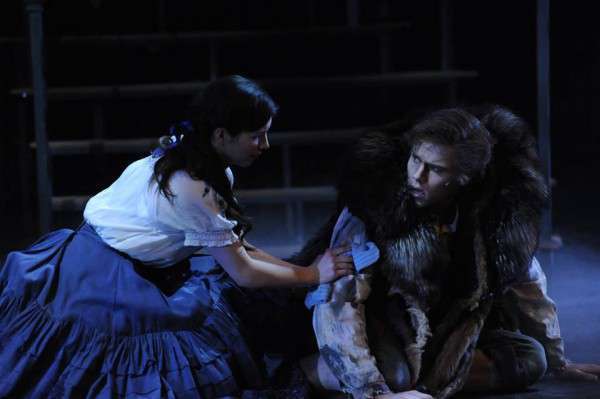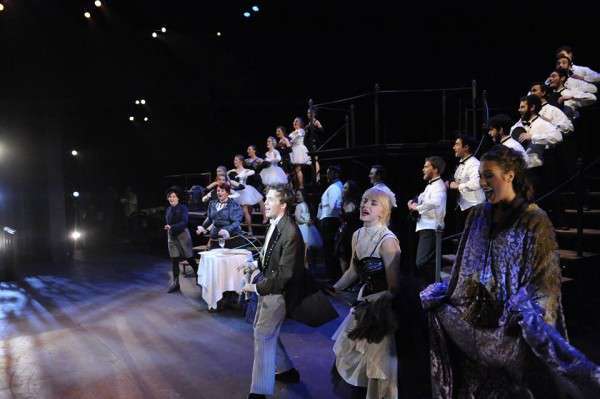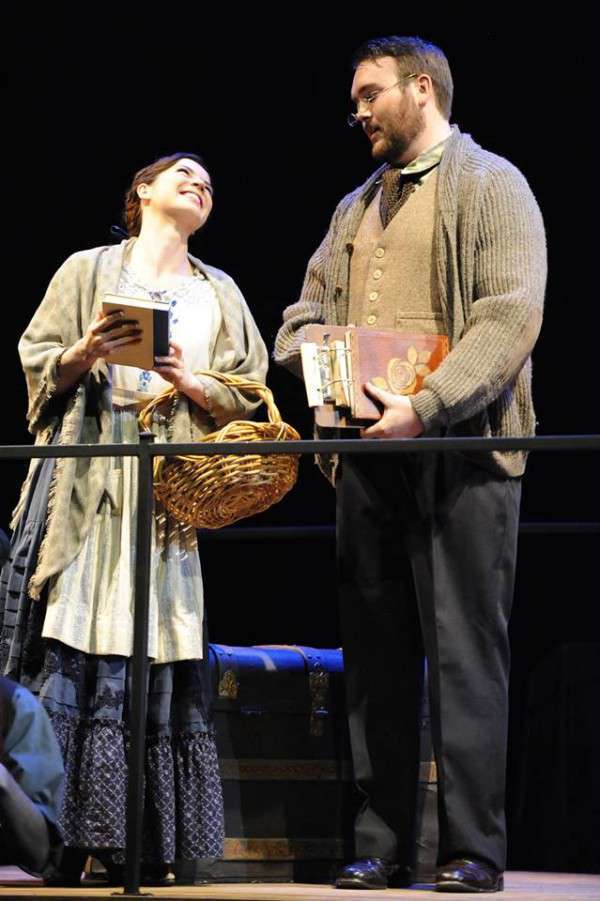
After being heaped with accolades and praise from critics and patrons, BYU’s production of Disney’s Beauty and the Beast ended its completely sold out run on December 10th. During the post show discussion that followed the performance, cast members and creative team members reflected on the experience of participating in the production and the way that it had shaped and influenced their life for the better. It proved to be a very emotional and bittersweet night for all involved.
Although there was initially some uncertainty as to how the production would look and feel, many feeling that the production concept would not translate to the stage, these fears appear unsubstantial in retrospect. As one cast member explained, “Generally, Disney’s Beauty and the Beast is much like a gilded rose…the story is beautiful, but it is steeped in so much spectacle that it somewhat loses its magic and charm. The effects and spectacle become the main storytelling device. Our production attempted to strip away the gold and look at the beautiful rose that is the story of Belle and the Beast.” In visually depicting the musical in a new way, audiences members were more attuned to the story of Beauty and the Beast and, as one audience member explained, “fell in love with this story in a new and exciting way.”
As I reflect on the experience of working on this production, my heart is full of gratitude and joy; it is very bittersweet. Although also initially wary of my favorite musical receiving a new interpretation, I have come to experience firsthand the message of this beautiful story. Working on the show as a crew member and watching the show each night, I would tear up during the titular ballad when Mrs. Potts sings, “Bittersweet and strange, finding you can change, learning you were wrong.” For me, this is the power of this piece–it reminds us that we have the capacity to change and that as we look beyond the exterior and give those around us a second chance, we can find the beauty within. While I thought I understood this prior to working on this piece, this was the biggest takeaway for me from this production.
To conclude, I have included some of my favorite production photos of this beautiful “tale as old as time.” I hope you enjoy them!












